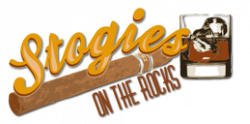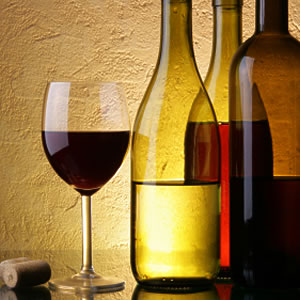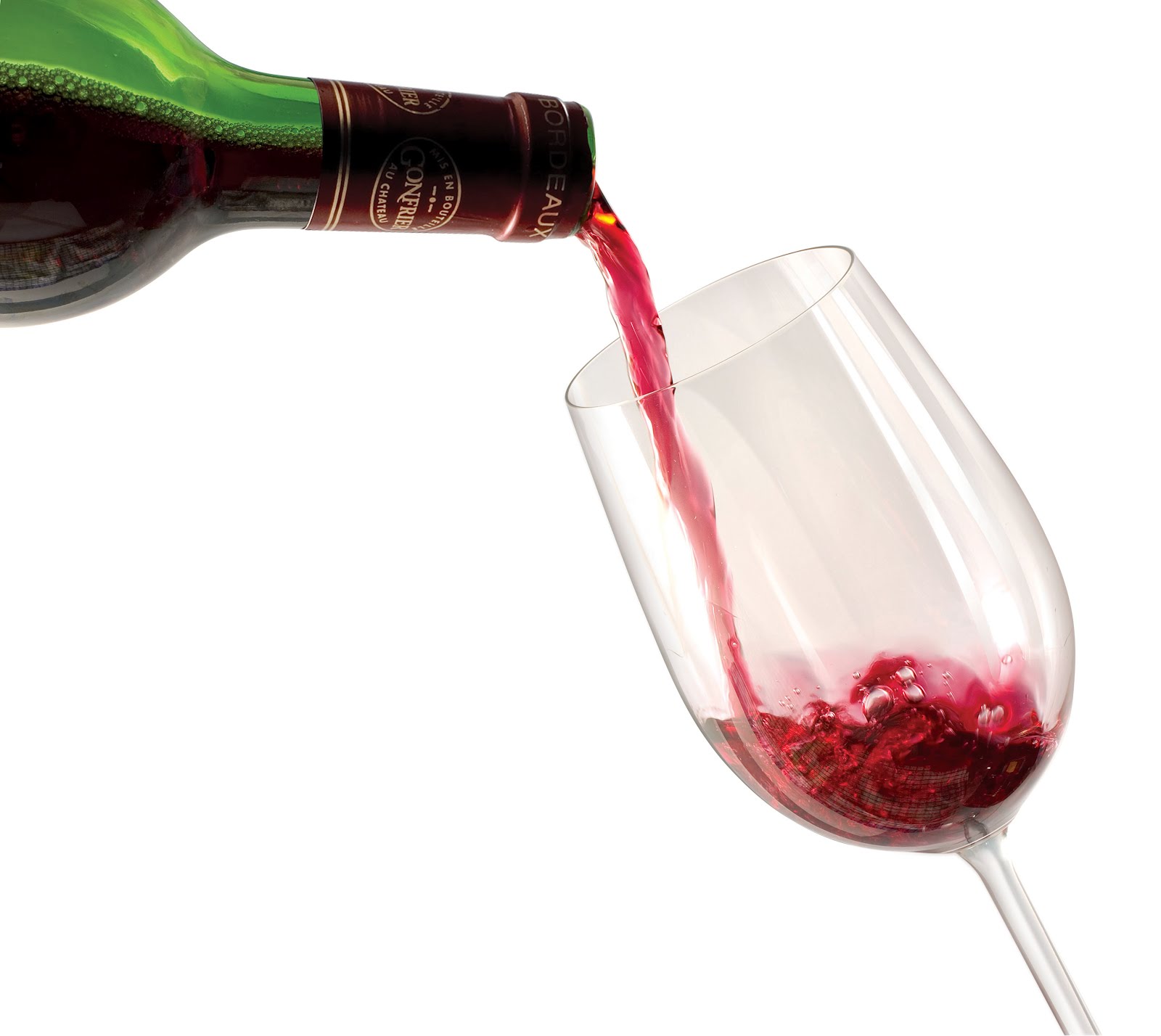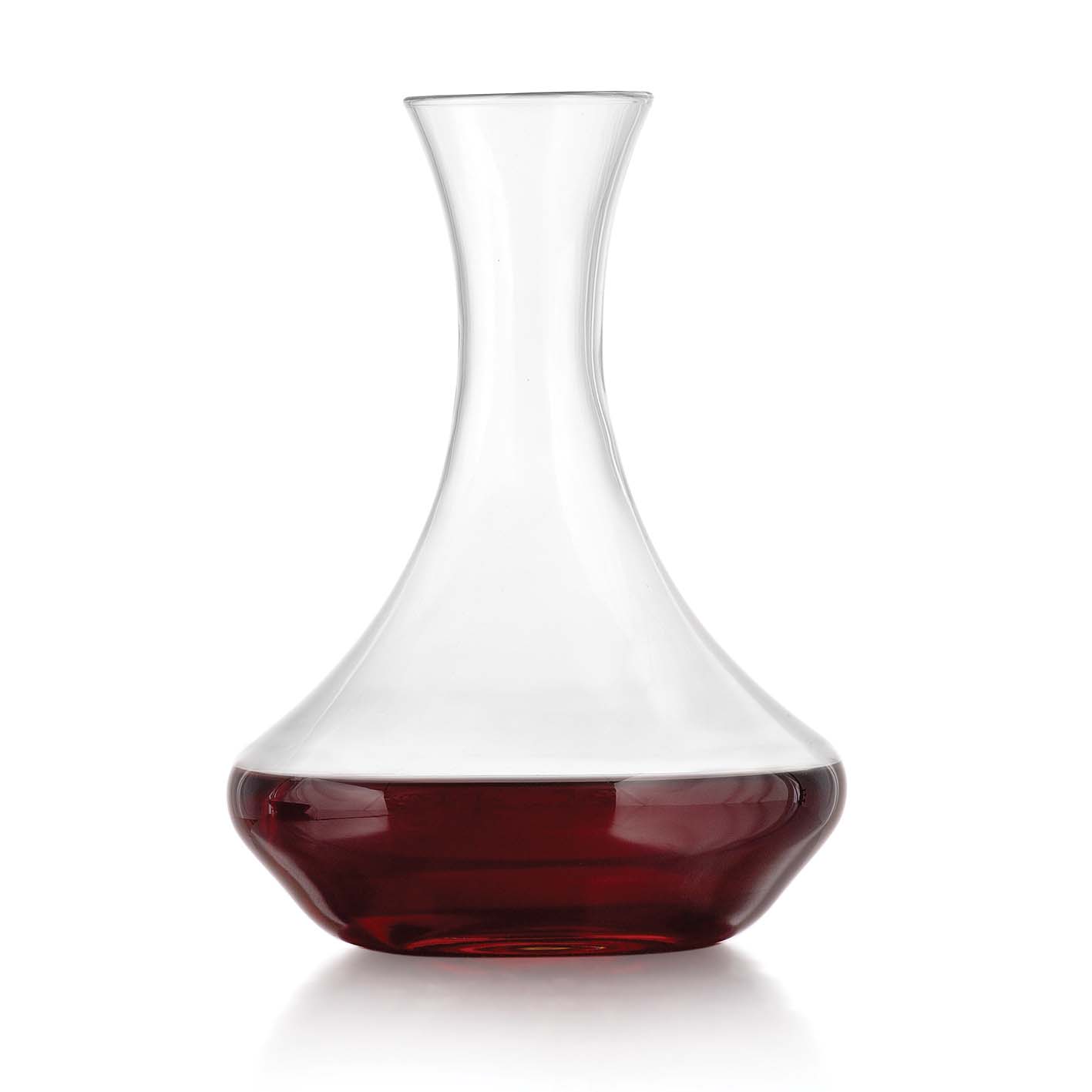Wine 101 – Table of Contents:
Intro
History
Nuts and Bolts
Intro:
Welcome to Wine 101. Much like Cigars 101, this is meant for everyone. Seasoned wine drinkers and those wishing to dip their toes into the wonderful world of wine are all welcome, and we encourage feedback, participation, and contribution to the conversation. My promise to you is that this is not a definitive or authoritative article (I am most certainly not a wine expert), rather a lot of good bits of wisdom and opinions I’ve gleaned over the years and am hoping to share with you.
I’ve been drinking and studying wine for a little more than 13 years now. At the outset of this journey, I definitely leaned towards sweeter wines and I didn’t have a familiarity with vintages. Over the years, however, a lot of things have changed. My entire palate has evolved. Whereas I used to love Pop Tarts and Pizza, now I prefer brussel sprouts and stinky cheeses (go figure!). I have a better understanding of which vintages for certain wines around the world are going to be better wines and a better fit for my palate. I truly love every style of wine, but frequently enjoy bigger, earthier, and drier old world wines. Particularly, I love red wines from Cotes du Rhone and Bordeaux in France and Barolo in Italy as well as a finely crafted Champagne.
One of the greatest things about wine is that it’s a journey that will never end. One will never be able to know everything there is to know about wine. Its story is changing daily with the introduction of new wines, blends, vineyards, wineries, growing and aging techniques. It’s a beautiful, ever-evolving tale that is incredibly exciting to be a part of. I’ll never be able to drink every wine in the world, but you can bet your butt that I’m sure gonna try.
History:
Where do I even start with the history of wine? Historians have conflicting opinions of where the first grapes were crushed, fermented, and consumed as wine. Most historical accounts do agree that wine has been a part of humanity for nearly as long as humans have. Author Patrick McGovern (Ancient Wine: The Search for the Origins of Viniculture) cites the first documented wine production in or around what is currently the Republic of Georgia.
In the Bible, the book of Genesis documents Noah and his three sons, Shem, Ham, and Japeth as wine-makers, having harvested a vineyard and, Noah later getting really, really drunk on his wine.
I won’t bore you with my recounts of the histories I’ve read or heard, but if you do like to get nerdy on the history of things, wine’s history is rich and it’s fascinating. I encourage you to check out McGovern’s book as well as the World Atlas of Wine. I will say this, though…wine is part of your story, part of your un-written history. You’ll always remember the amazing (and maybe difficult) times in your life where wine was there, a beautiful and welcomed addition to any story or situation.
Nuts and Bolts:
Choosing your wine:
For a restaurant, you may always plan ahead. See if the venue has a website with their wine list and do a little research to equip yourself to seem educated and prepared. At the restaurant, any good server or sommelier will be able to suggest a great bottle that meets your price point. The more information they have to work with the better, so be as specific as possible in providing those details as that will ensure the wine will be right up your alley.
If your wine comes by the glass or by the bottle, be sure to inspect the wine (and cork if possible) to ensure the wine has not gone bad. Not sure if your wine has gone bad? Check out this article on wine.com to know what to look for. In the case that you have a bad glass or bottle, never hesitate to send it back. Remember, though, to never send back a wine simply because you don’t prefer it. Only send it back if it’s truly taken a
qualified turn for the worse.
At the wine shop, get to know the staff and let the staff know about you. If you’re a newbie, they’ll be delighted to talk you through options to see what will be a good bottle for you to try. If you’re looking for a specific bottle, be sure to ask for it by name and vintage. Take time to read. Most wine shops will have descriptions of the wines and – if not – you will see that there are details on the back of most bottles. Often times, wine shops will host wine tastings. These are great to attend to sample wines you might not otherwise try and to get a light education on what you taste. Also, see if you can join a shop’s mailing list or follow them on social media. This is a great way to find out about tastings, new products, and promotions.
And just like being at a restaurant, if you get home and realize you have a bad bottle (maybe it was in a hot room too long, soaked through the cork, or aged improperly), be sure to hang onto the cork and the bottle and ask the shop for a new bottle. I’ve had to do this a handful of times over the years and – while somewhat nerve-wracking to do so- every time I did, the shop’s employees were more than happy to make the exchange.
Never fear the box wine. It’s not the same experience as corking a new bottle of wine. It’s not meant to be, but it’s perfect for larger gatherings or wine you wish to stay fresh longer (boxed wine is air sealed, so it can usually hold strong for a couple of weeks). And for you environmental types, the boxed wine is much more eco-friendly than glass bottled wine.
Choosing your glass:
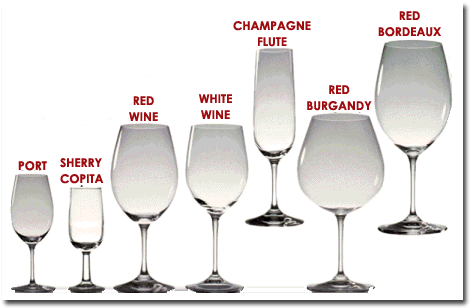
Choosing the proper glass to go with your wine selection can make for a subtle, but noticeably better experience. Most glasses are crafted in a way to allow you to more easily oxidize the wine in order to open the bouquet and flavor, giving the drinker just the right amount of room to swirl the wine for that cause. Other glasses, like Champagne flutes, are tall and skinny to help prevent the bubbles from dissipating while rosé glasses have a tapered, more curved lip to help curb any acidity that can cut into the refreshing smoothness of the wine.
Stemless wine glasses have been a hot commodity for many years and I still enjoy the ease of use a stemless glass provides while drinking wine. Do keep in mind that the heat from your hand can quickly warm the wine while you are drinking it.
Most restaurants will offer a one-size-fits-all wine glass or a specific glass for red wine, white wine, and Champagne. Some wine bars or lounges will pair your wine with the appropriate glass, whether you’re drinking Chardonnay, Bordeaux, Port, or rosé. For your everyday, at home enjoyment, a basic set of red and white wine glasses will serve you just fine.
Favorite wines under $20:
Dry / Spicy –
Chateau St. Michelle Chardonnay 2011 (white)
St. Francis Old Vines Zinfandel 2009 (red)
Earthy / Woody –
Errazuriz Sauvingnon Blanc 2011 (white)
Vina Eguia Reserva 2007 (red)
Sweet / Fruity –
King Estate Signature Collection Pinot Gris 2011 (white)
Hahn Estates Pinot Noir 2011 (red)
How to Treat The Wine:
Opening
Foil: To be formal, most people will use a foil cutter or a small blade that may be attached to the corkscrew. At home, I grip the foil with my hand and see if I can slide it off the bottle easily. It makes for a quicker process and takes nasty foil cuts on your hands out of the equation.
Corking:
Don’t aggressively open the wine, resulting in a loud pop of the cork. Try to open it slowly with little to no sound from the cork. I prefer the corkscrew that is referred to as the Rabbit Ear Corkscrew. If your wine bottle has a screw-off cap or your wine is in a box, your job is easy!
Inspecting the cork:
If your bottle has a real, corkwood cork, the overall color and saturation of the wine in the cork are fair indicators of the flavor and age of the wine and also how it was stored. Be aware of corks that are nearly or entirely soaked through. This is an indication that the wine could be compromised, especially if you notice any hints of mold on the cork. This mostly occurs with older wines that haven’t properly been stored.
Please note: if a server or sommelier opens your wine and sets the cork in front of you, that is only for you to visually inspect. Please do not smell the cork. It’s a rookie move and won’t actually give you a true indication of the aroma or flavor of the wine. You’ll simply smell corkwood with a little wine on it. Please wait until the wine is poured to take your first whiff.
Pouring
Normal Pour:
Take care to pour with the bottle ever so slightly tilted for a smooth, even pour. You’ll want to avoid the “GLUG, GLUG, GLUG” sound. Avoid tilting the bottle completely up as there may be sediment in the bottle that can easily be captured by the curvature of the bottle. While sediment (commonly sediment is deposits of tartrates or tannins (the grape’s chemical compounds)) are often intentionally left in wines to help with aging and coloration, drinking wine with sediment in it, the texture of the wine will be affected and can create an added sense of bitterness to the wine.
Decanting:
This is an optional step, of course, but for wines that are five years old or older, decanting can open up the wine much more quickly. Great decanters are around $30-50 and can be found online.
Decanting younger wines (wines 2-4 years old) is in no way necessary, it is a great practice to introduce more oxygen into the wine, which will almost always help open up the aroma and flavor.
Aerating:
Another optional step, but one that introduces a lot of air into the wine as it’s being poured. You may use an aerator to pour into a decanter or directly into your glass.
Filtering:
This is a great step for a large number of Old World wines or older, well-aged wines, as they tend to have sediment in the bottle.
The Pour:
About 3-4 ounces of wine in your glass to give you room to swirl, smell and smell some more before tasting. NOTE- you may want to mention that you can pour more if it’s red, but less if it’s white to keep it chilled and consistent.
At the restaurant
Ask the right questions (is wine even right for me to pair with this meal?), but also follow your heart. If a Chardonnay with that steak works for you, go for it. No judgment here. Do take time to peruse the wine list and ask the server for any food/wine paring suggestions. There’s usually an awesome pairing that can really add to the overall dining experience.
Inspecting the Wine: check the wine name and vintage to make sure they are correct for the wine you’ve ordered. Have a quick look at the cork to make sure it’s not overly saturated and note the color on the end of the cork. When your first, small taste is poured, have a look at the color of the wine (some will hold the glass up to a light to get a truer eye on the color). Smell the wine, tilting the glass towards your nose and make sure to get your nose deep into the glass. Swirl the wine. A good five to six swirls are sufficient for the tasting to make sure the wine is good. Smell the wine again and taste (any hints of vinegar is a bad sign), and taste.
Sending a bottle back: the aforementioned smell of vinegar or a generally “off” smell means this bottle is most certainly not going to be at its best. Never hesitate to ask for another bottle or an entirely new wine altogether.
To Pour or Not to Pour: Often, servers at the restaurant will take the liberty to refill glasses as they see fit. If you’d rather pour yourself, let the server know. After all, this is your bottle and you can serve it as you like.
How to drink
The short answer is, it’s up to you, but typically…
Match the wine with the proper glassware. It makes a noticeable difference in
the experience.
Holding the glass: stemmed hold by the stem. Stemless, make sure to not let your hand warm the wine too much esp. with white wines, rosés, and Champagne.
For older wines, swirl in the glass for a good two-three minutes or decant properly for 10-30 minutes to allow it to open up to its truest flavor and aroma.
Smell the wine by tilting the glass towards your nose and put your nose into the glass as close to the actual wine as possible for a few good whiffs.
Take a small sip of the wine and swirl around your tongue to allow each taste bud to gather the flavor profile. Do this for just a few seconds before swallowing the wine.
Aspirate the wine: while holding the wine in your mouth, breathe gently through the mouth to aerate the wine, then closing your mouth and breathing out your nose.
This is akin to a retro-hale with a cigar.
Take notes and photos. Remember the smells and tastes and keep a journal of wines you particularly enjoy.
Ultimately, enjoy wine how you like. Play by the rules or make up your own. This experience is uniquely yours and, ultimately, these are just suggestions to better your adventure.
Etiquette:
Never pound a glass of wine. Take care and time to smell and taste your wine slowly. Wine (like a cigar) is not to be rushed.
Always refill others’ glasses first (ladies first, just like your mother taught you). If you run out before your next pour…open or order another bottle.
Rarely pour the last drop. There can often be sediment in the punt (the dimple in the foot of the bottle) that can spoil the last few sips for you or someone else. Let the curvature of the bottle collect that or use a filter to make sure you can enjoy the entire bottle of wine.
Storing your wine:
In the home: cool, climate-controlled place is best. Between 55° – 60° F (approximately 13° C) is ideal for storing your wine. Most white, sparkling, and rose wines can simply be refrigerated. These days, wine fridges are very affordable and will allow you to control the temperature ensuring a properly stored wine.
Cleaning the glass:
Always clean the glass with extra hot water and towel dry with a cloth towel. Washing with dish soap or putting glasses in the dishwasher can leave a soap film on the glassware which can and usually will affect the flavor and scent of wine.
*Basic Vocabulary of wine:
Acid – A basic flavor profile of wine. A good wine will tend to have a fair balance of sugar to acid and acidity will aid the freshness of the wine.
Alcohol – A wine’s alcoholic content is due to the fermentation and will play a major role in the body and flavor.
Appellation (AOC) – French designation guaranteeing origin, grape varieties and method of production
Aroma – Synonymous with “bouquet” the aroma is the overall scent profile of the wine.
Balance – A descriptor of a wine that evenly balances a number of flavors
Body – A characteristic of how a wine feels in your mouth
Bouquet – Similar to “aroma” the bouquet can include scents that are derived from the making of the wine rather than just the fruit
Capsule – Covers the cork on the bottle.
Clean – Typically indicates a fresher wine lacking any imperfection
Complex – Complex wines will change in flavor and aroma throughout each glass or bottle.
Denominazione di origine controllata (DOC) – The Italian quality designation based on grape variety and origin
Dry – A dry wines are lower in sugar content and lack in sweetness
Finish – The sensation and flavors that dwell in the throat after the wine has been swallowed.
Hot – A hot wine is one with too much alcohol and can sting or burn the throat
Legs – The way a wine will descend down the side of the glass after swirling. The slower the descent, the longer the legs, an indication of a higher alcohol content
Nose – Another way of describing the scent of a wine.
Palate – the roof of the mouth, consisting of an anterior bony portion (hard palate) and a posterior muscular portion (soft palate) that separate the oral cavity from the nasal cavity.
Tannin – An astringent part of the grape skin and seed.
Terroir – characteristics that the geography, geology and climate of a region express
Texture – Much like a wine’s “body” texture is the felt quality of the wine.
Varietal – Wine made from only one grape variety. The opposite of a blended wine.
Vintage – The year a wine was produced.
Old World – Referring to wines primarily from Europe and regions around the Mediterranean Sea.
New World – Any wines produced outside of Europe and the Middle East.
